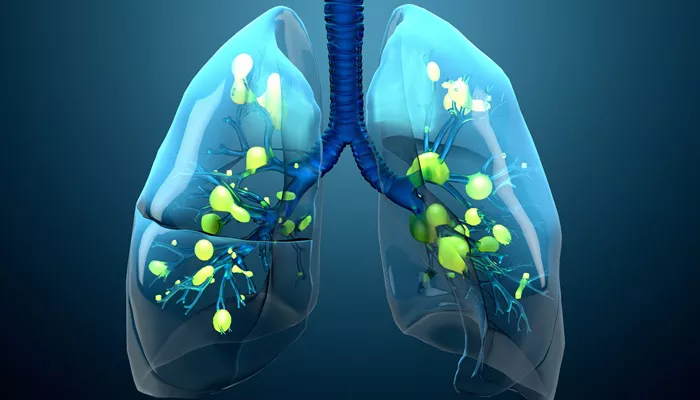Chronic obstructive pulmonary disease (COPD) is a progressive lung disease characterized by airflow limitation that is not fully reversible. It encompasses conditions such as emphysema and chronic bronchitis, primarily caused by long-term exposure to irritants that damage the lungs and airways. COPD significantly impacts the quality of life and is associated with various systemic complications, including cardiovascular issues. Among these, cardiac arrhythmias are particularly prevalent and can complicate the management of patients with pulmonary diseases.
Arrhythmias are irregular heartbeats that can arise from various underlying conditions, including structural heart disease, electrolyte imbalances, and hypoxia. In patients with COPD, the most common arrhythmia observed is atrial fibrillation (AF). This article will explore the relationship between COPD and arrhythmias, focusing on atrial fibrillation as the most prevalent type seen in these patients. We will discuss the mechanisms behind this association, risk factors, clinical implications, and management strategies.
Understanding Atrial Fibrillation
Atrial fibrillation is a type of supraventricular arrhythmia characterized by rapid and irregular beating of the atria. During AF, the electrical signals in the atria become chaotic, leading to ineffective contraction and an increased risk of thrombus formation. This condition can result in various symptoms, including palpitations, shortness of breath, fatigue, and an increased risk of stroke.
see also: How to Get Rid of Arrhythmia Naturally?
Prevalence in COPD Patients
Research indicates that atrial fibrillation is notably common among individuals with COPD. Studies have shown that approximately 18% of patients with COPD also experience AF3. The prevalence increases with the severity of COPD; for example, rates of AF have been reported at 21.8% for mild to moderate COPD, escalating to 31.8% for very severe cases.
This correlation underscores the importance of monitoring for arrhythmias in patients diagnosed with COPD.
Factors Contributing to Arrhythmias in COPD
Several factors contribute to the development of atrial fibrillation in patients with COPD:
1. Hypoxia
Chronic hypoxia resulting from impaired gas exchange in COPD can lead to structural changes in the heart. Hypoxia promotes electrical instability in cardiac tissues, increasing susceptibility to arrhythmias2.
2. Inflammation
COPD is associated with systemic inflammation due to ongoing lung damage. This inflammatory state may affect cardiac function and contribute to arrhythmogenicity.
3. Right Heart Strain
Patients with advanced COPD often develop pulmonary hypertension due to chronic hypoxia and vascular remodeling. The resultant right heart strain can lead to dilation and fibrosis of the right atrium, predisposing individuals to atrial fibrillation.
4. Comorbidities
Many patients with COPD also suffer from comorbid conditions such as heart failure, hypertension, and diabetes, which further increase their risk for developing AF. These comorbidities often complicate treatment strategies and require careful management.
5. Medications
Certain medications used to manage COPD symptoms may also contribute to arrhythmias. For instance, bronchodilators can enhance arrhythmogenic potential by altering electrolyte balance or increasing heart rate.
Clinical Implications of Atrial Fibrillation in COPD
The presence of atrial fibrillation in patients with COPD has several clinical implications:
Increased Mortality Risk
Patients with both COPD and AF face a higher risk of mortality compared to those with either condition alone. The interplay between respiratory failure and cardiac dysfunction can lead to acute exacerbations and increased hospitalizations.
Stroke Risk
Atrial fibrillation significantly raises the risk of thromboembolic events such as stroke. Patients with both conditions must be carefully evaluated for anticoagulation therapy to mitigate this risk.
Management Challenges
The management of AF in patients with COPD presents unique challenges. The use of certain antiarrhythmic medications may be limited due to potential respiratory side effects or interactions with other treatments for COPD. Consequently, a multidisciplinary approach involving pulmonologists and cardiologists is essential for optimizing patient outcomes.
Diagnosis of Atrial Fibrillation
Clinical Evaluation
Diagnosis typically begins with a thorough clinical evaluation that includes a detailed history and physical examination. Symptoms such as palpitations or dyspnea should prompt further investigation into potential arrhythmias.
Electrocardiogram (ECG)
An electrocardiogram (ECG) is crucial for diagnosing atrial fibrillation. The ECG will typically show an absence of distinct P waves and an irregularly irregular ventricular response.
Holter Monitoring
In cases where AF is suspected but not captured during a standard ECG, Holter monitoring may be employed to detect intermittent episodes of atrial fibrillation over a 24-hour period or longer.
Management Strategies for Atrial Fibrillation in COPD Patients
Managing atrial fibrillation in patients with COPD involves several key components:
Rate Control
Controlling ventricular rate during episodes of AF is essential for symptomatic relief. Beta-blockers or calcium channel blockers are commonly used agents; however, careful consideration must be given to their respiratory effects.
Rhythm Control
In select patients, rhythm control strategies may be appropriate. Antiarrhythmic medications such as amiodarone can be effective but require monitoring due to potential adverse effects on lung function.
Anticoagulation Therapy
Given the increased stroke risk associated with AF, anticoagulation therapy should be considered based on individual stroke risk assessments using tools like the CHA2DS2-VASc score.
Addressing Underlying Causes
Effective management of underlying respiratory issues is crucial.
Optimizing COPD treatment through bronchodilators, corticosteroids, and oxygen therapy can help improve overall cardiovascular health.
Conclusion
Atrial fibrillation stands out as the most common arrhythmia seen in patients suffering from chronic obstructive pulmonary disease (COPD). The interplay between respiratory dysfunction and cardiac rhythm disturbances underscores the need for vigilant monitoring and comprehensive management strategies tailored to this patient population.
Related topics:


